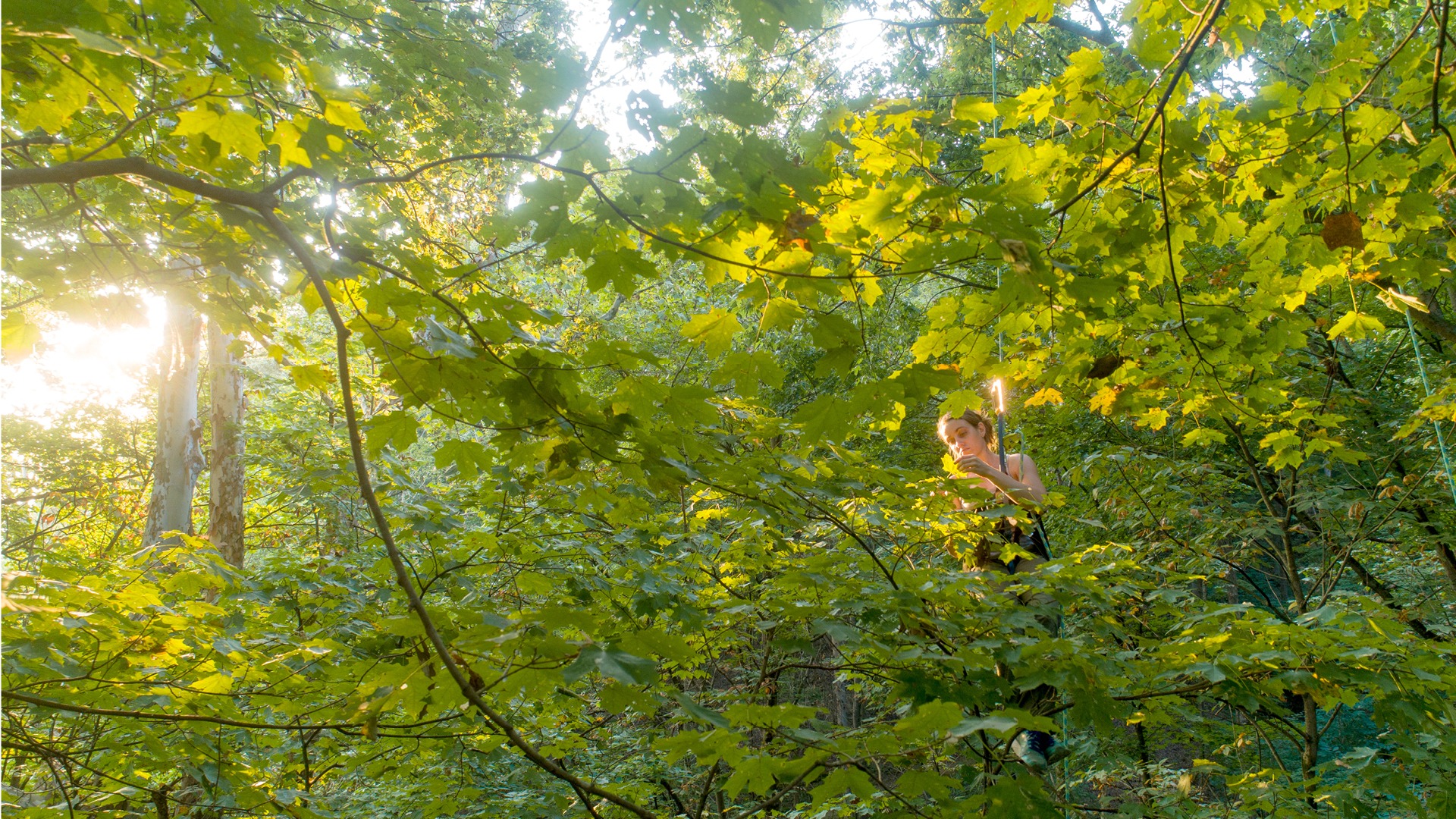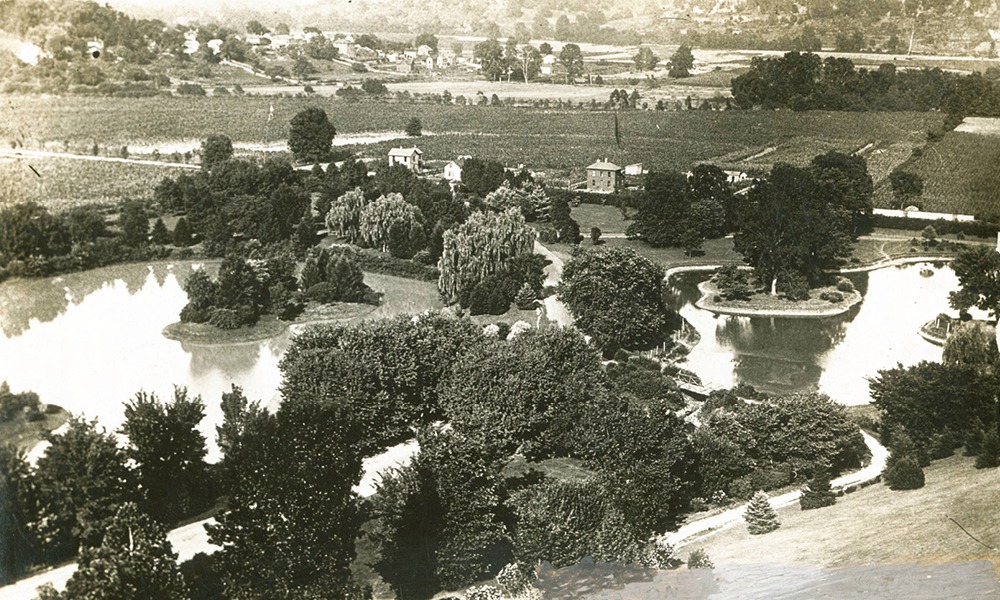
Bird’s-eye view of two of the four ornamental lakes on the grounds of the Athens Asylum for the Insane, later known as the Athens State Hospital. Photo courtesy of Mahn Center for Archives
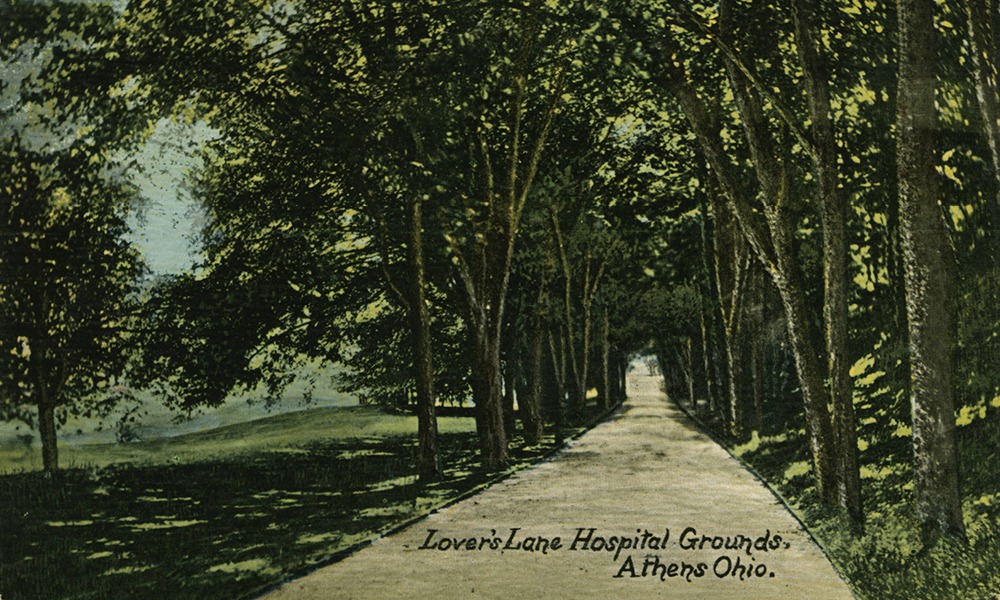
Postcard of "Lover's Lane" on grounds of Athens State Hospital, circa 1907-1923. Photo courtesy of Mahn Center for Archives & Special Collections.
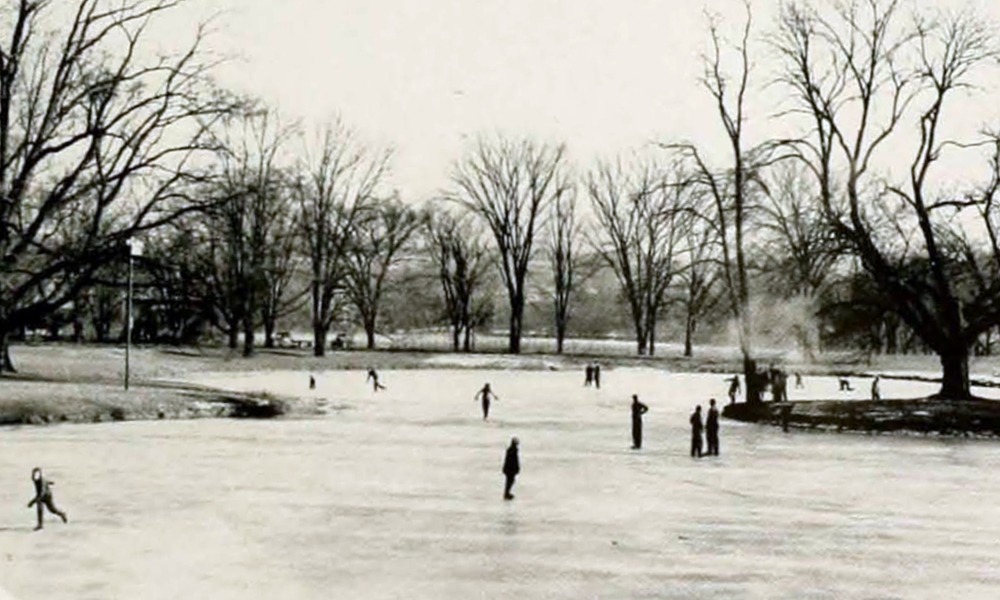
“Springtime isn’t the only season when we make use of the asylum grounds.”—Athena yearbook 1946. Photo courtesy of Mahn Center for Archives & Special Collections.
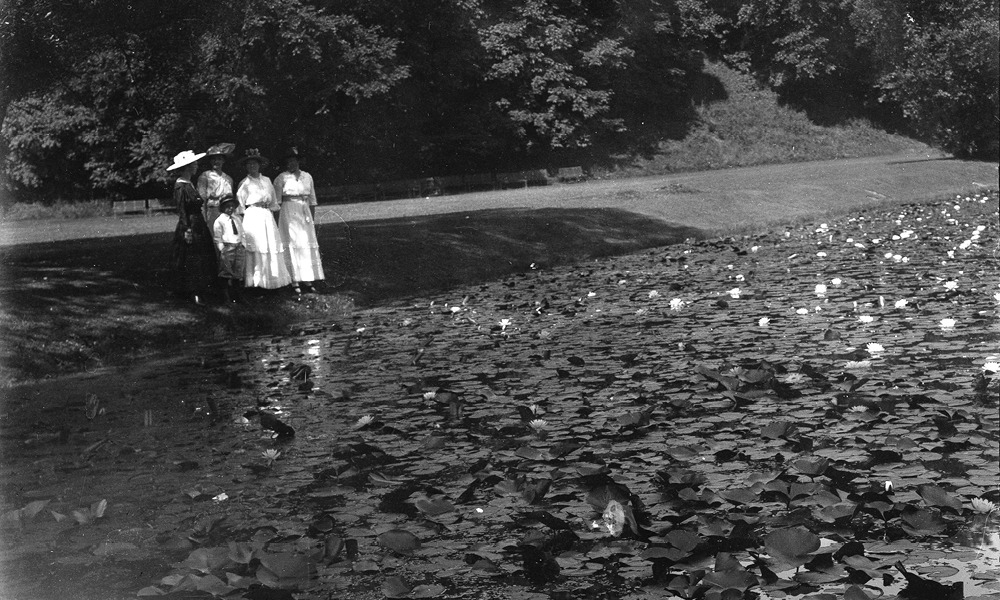
Group standing at edge of lake on grounds of Athens Asylum for the Insane/ Athens State Hospital, circa late 19th to early 20th century Photo courtesy of Mahn Center for Archive & Special Collections.
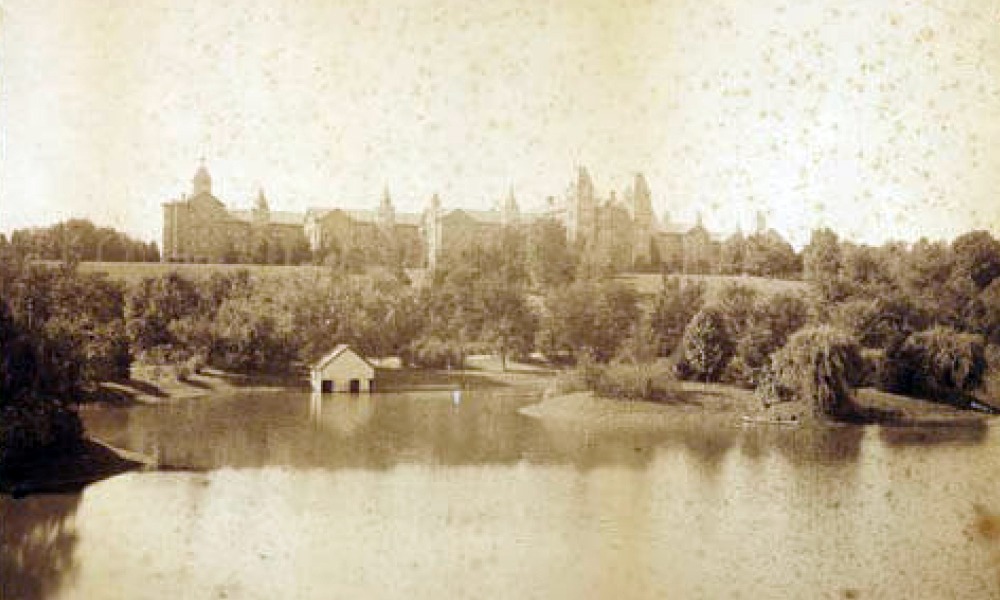
View of Athens Asylum for the Insane from across a lake, circa 1893. Photo courtesy of Mahn Center for Archives & Special Collections
The Ridges’ Kirkbride complex was sculpted from bricks formed from the grounds, creating lakes that contributed to a healing landscape for the mental health facility’s patients. For generations of OHIO students and the community, it was a place for recreation.
While those lakes no longer exist—victims of frequent flooding and the subsequent re-routing of the Hocking River —the land at The Ridges continues to provide town and gown opportunities for recreation as well as learning and research.
Roughly 580 of The Ridges’ more than 700 acres have and will remain undeveloped. Under the Ridges Framework Plan, 163 acres have been designated conservation land, reserved for academic and recreational activities.
The approximately 205 acres of land northwest of The Ridges Green serves as The Ridges Land Lab—its wildlife, more than 500 plant species and historic usage making it one of OHIO’s most unique classrooms and research spaces.
“The whole Ridges complex is an incredibly rich resource,” says Dr. Brian McCarthy, MS ’84, professor of forest ecology and senior associate dean of faculty research and graduate studies for the College of Arts and Sciences. “It’s juxtaposed to Ohio University, and the value of that is almost incalculable in terms of student, faculty and staff usage of the property, whether it be for recreational, personal or professional reasons.”
McCarthy is one of three faculty members who serves on The Ridges Land Lab Committee, managing research conducted on the property—once home to the farmland and orchards that made the mental health facility largely self-sufficient and provided purposeful work as part of the patients’ treatment.
“That area has such a long history of human use,” adds McCarthy. “These forests and fields are really an artifact of a hundred years ago. It gives us some insight into what was going on biologically back in that era that’s hard to come by otherwise.”
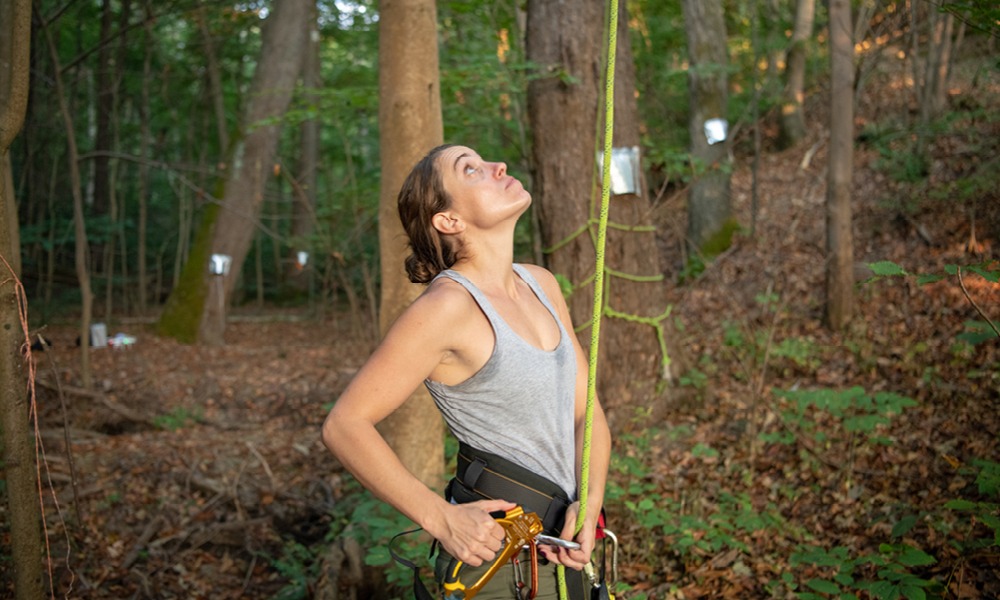
Doctoral candidate Kelsey Bryant prepares to climb a tree at The Ridges Land Lab, which served as the primary field site for her research. Photo by Ben Wirtz Siegel, BSVC ’02
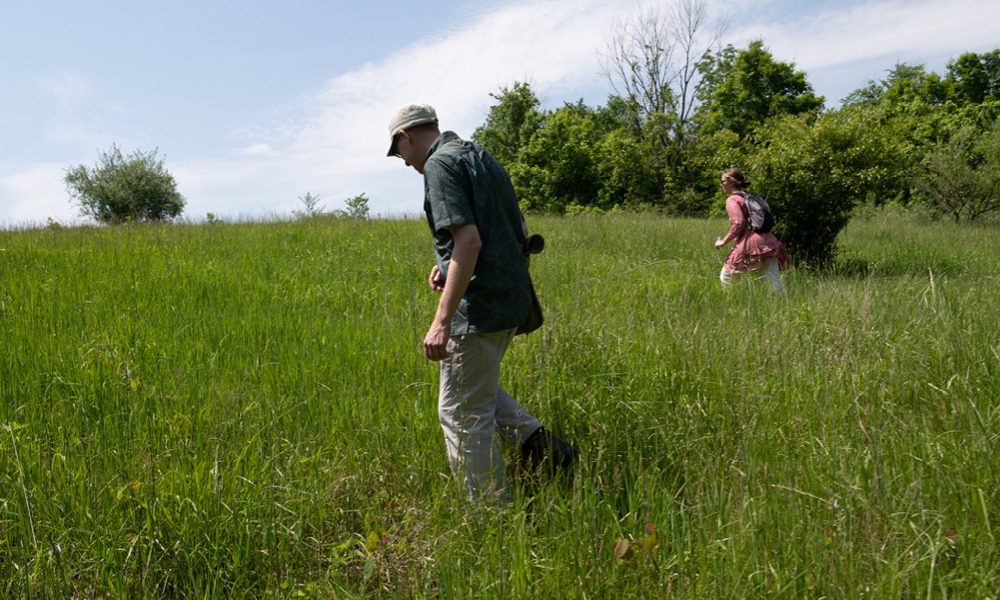
Jared Deforest, Land Lab, Land Use Tour, Mapp Athens, Plant Biology, Ridges, college of arts and science, sarah davis. Photo by Ben Wirtz Sigel' BSVC '02
Dr. Jared DeForest, associate professor of environmental and plant biology, has been fascinated by the Land Lab since joining the OHIO faculty in 2006. He’s uncovered mysteries—like why Radar Hill is grassland instead of forest, working with a geology professor to determine that millions of years ago the hill was part of a freshwater lake—and uses the Land Lab as a natural extension of his classroom.
“It’s just a gem,” he says. “It has so much diversity and hits on so many key concepts in plant and forest ecology.”
The soil pits DeForest has dug at the Land Lab allow students to read the soil and determine the history of the area over millions of years. Students in his dendrology class are able to find nearly 40 species of trees on just one of the Land Lab’s trails. And the photographs he has taken there over the past 14 years illustrate changes in the forest.
“Showing students these pictures creates an awareness of how dynamic a forest is, but it changes on timescales that make it difficult as humans to understand,” DeForest says.
Over the past five years, doctoral candidate Kelsey Bryant has been doing field studies at the Land Lab.
“You have literally four or five different ecosystems within walking distance at The Ridges Land Lab,” Bryant notes. “Within like half a mile, you have people doing biofuel research, American Chestnut research, insect research, wildlife research, forest research. I’ve made friends and work connections because of the Land Lab.”
For her dissertation, Bryant studied how different trees respond to changes in water availability and annual weather, looking at six species of trees at the Land Lab.
Using sensors powered by solar panels, Bryant was able to determine how water moves in the trees, each species with its own internal water movement structure. Using ropes, so as not to harm her subjects, Bryant would climb the trees to harvest leaves, taking measurements that indicate the amount of water stress the trees were experiencing, which affects the amount of carbon dioxide they sequester.
“It’s really interesting how trees—that have the same access to water, the same environments but different vessels through which they move water—behave completely differently,” Bryant says. “Does that mean that in 50 years one of those species may not be as successful? That’s possible, and that’s really the broader significance.”
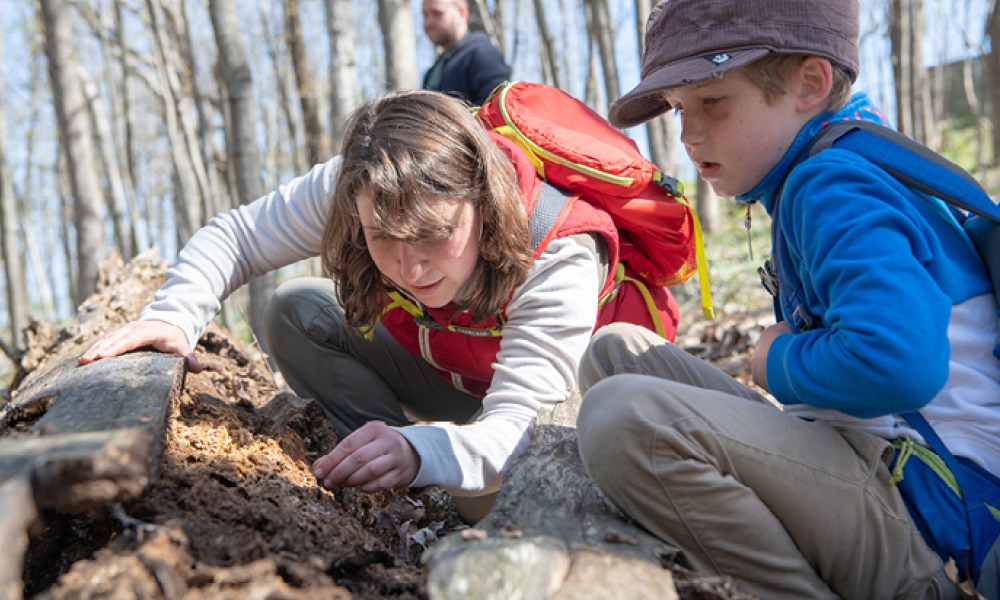
Bio Blitz Ridges, Museum, Science, Nature, Students, Faculty, Community Engagement. Photo by Ben Wirtz Siegel BSVC '02
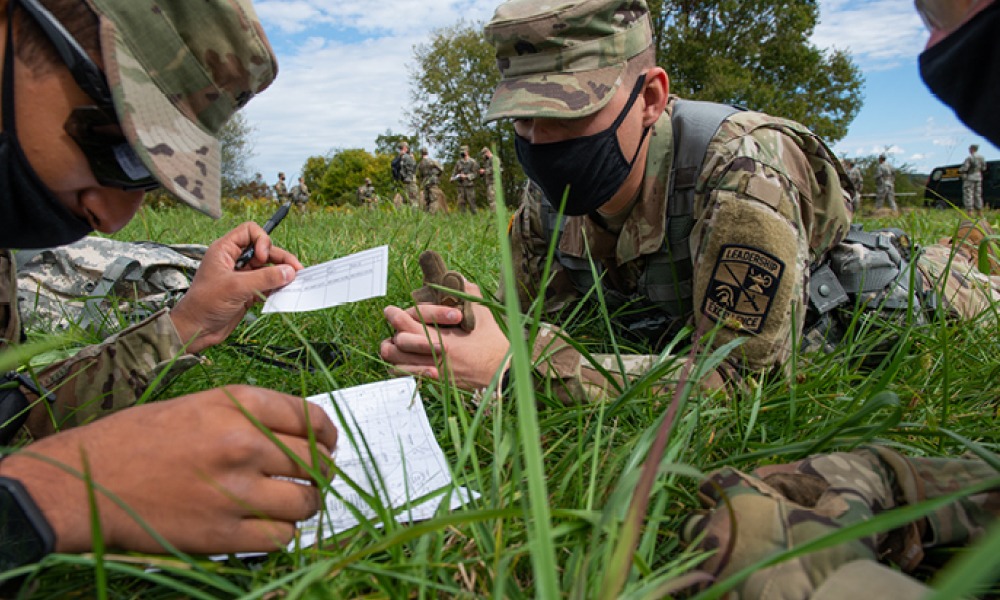
Bhavan Patel, left, Jacob Ehreth and Armando Rodriguez lay on their stomachs as they work together to plot out the coordinates on Wednesday, Sept. 30, 2020. Photo by Julia Martins de Sa.
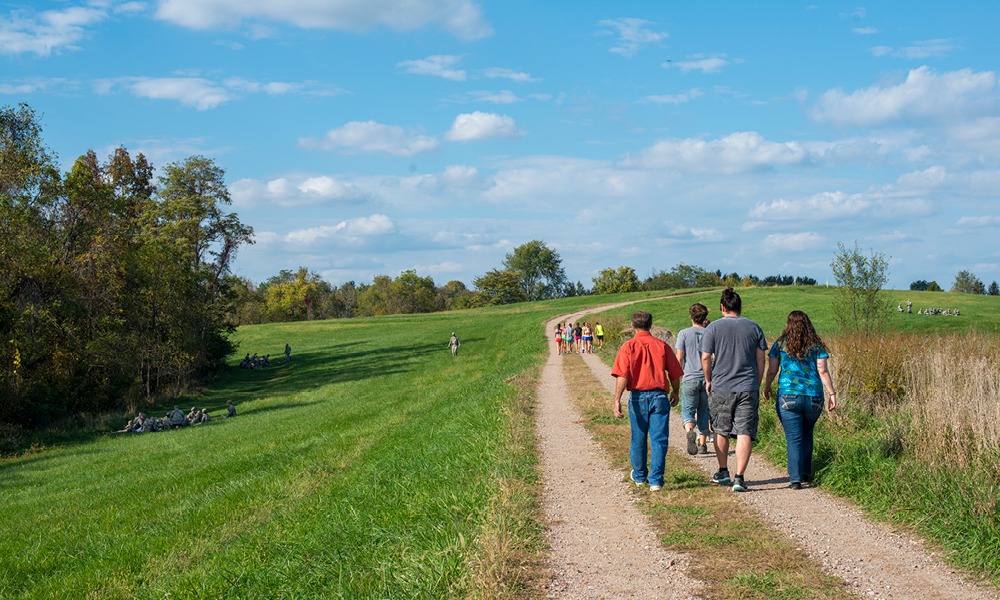
Photo by Ben Wirtz Siegel, BSVC ’02



